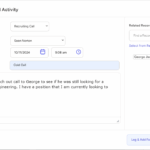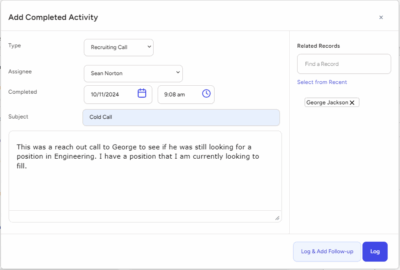Recruiting today can be extremely difficult. For a multitude of reasons, with world events, technology and media overload and a great resignation – hiring processes have had to adapt to be successful. What does success look like? What does the actual hiring process look like? We’ll dive into the main big parts of a recruiting process and how to be successful in those stages. With some recruitment strategies in place, you can be sure to find some success in finding great candidates.
What is a recruiting process?
Recruiting processes are the way in which companies and recruiters find candidates to fill open positions. Not only that, but a recruiting process should ensure that candidates are eased through the process whether it be through communication, interview scheduling, etc. This process can be optimized so that you are making the most of your time at each stage, finding the right and best candidates, as well as continually monitoring it for improvement.
Where to start?
For most recruiters, finding candidates is the best way to get started on the journey of a recruitment process. However, you should take the time to review your company’s standing, your roles, and the needs you have as a recruiter.
Your company image
This can become very important as job seekers find your content or name out there online and want to learn more about you. The best way to keep your company image and overall brand the best it can be is to update your profiles. Whether it be on LinkedIn, Glassdoor, your other social media accounts or even your website – it is important to keep your best foot forward when it comes to your company’s image.
When you get to hiring new candidates, they will definitely be looking for how you present yourself online and what online reputation you have. The more you can control the narrative and maintain an honest and positive presence online, the better!
Your open roles and needs
Whenever you’re hiring for a new position, you should know the key job responsibilities like the back of your hand. This way, you can ensure that you’re well-versed when it comes to initial conversations with candidates. You also have to make sure that those roles and responsibilities are what your team or teams actually need. This portion of preparation before you really start doing any actual recruiting work ensures that you have a solid foundation to begin.
Sourcing Candidates
Your first stage as a recruiter is typically looking for top quality candidates that will be great for your open positions. This should take a good amount of time to search around professional jobs and networking sites. Depending on your needs, some great general sources to use are:
- Indeed
- Glassdoor
- Monster
- ZipRecruiter
- Handshake (Young professionals, upcoming and recent college graduates)
Ways to improve your recruitment sourcing
This all depends on how much time you have to be spending on sourcing and what exact needs you have for candidates. As was mentioned before, there should be a good amount of time dedicated to sourcing and finding top talent.
Whether you’re a hiring manager or an agency recruiter, the best thing to do in today’s candidate market is to dedicate time to connecting with candidates before any interview process. Screening stages or 1-on-1 meetings are great ways to absorb information to share with your team before proceeding into any interview stages.
Another way to boost your sourcing efficiency is to use recruiting software that has sourcing tools built in. With features such as job posting to different job boards, information harvesting extensions and more – sourcing can be made a lot easier. You can also try to write more compelling job postings through your applicant tracking system, knowing that it will be easier to post to more places.
Screening Candidates
To make sure you’re getting the most of your recruiting process, you should find ways to improve your screening process. Think of this as the filter in which your candidates either make it through if they’re good enough or just stay in your database if they don’t match any openings.
Ways to improve your recruitment screening process
There are a few ways to improve your screening, and these fall into areas of the candidate experience, utilizing different recruiting strategies and tactics, as well as being a good human being.
Treat your candidates like customers: You want to create great, natural partnerships with your candidates. After all, they are the reason you do your job, right? When reaching out, make it personalized and let them know you’ve checked their LinkedIn profile or done some research into why they might be a good fit for a role. This let’s candidates know that they can trust you when it comes time to interview or proceed to a new role.
Provide good interviews + communication: There can be many stages to interviews and it can often be a lot to handle. However, this should always be handled with professionalism and timeliness. Leaving candidates in the dark can be a red flag and turn candidates away from an interview process. Whenever communicating, be clear, concise and at least somewhat consistent. Interviews should be effective and not overwhelming for candidates. This also can lead candidates to walk out the metaphorical door.
Aim for Diversity, Equity and Inclusion: Promoting diversity in the workplace is not a trend, and it’s also not something that should be forced. However, it should be a part of any recruiting strategy to help reduce biases and have diversity within a given organization.
Selecting Candidates
This can be the most challenging part of recruiting, when it comes down to finding the best candidate for a job. However, you’ve done all the work up to this point – so you’re almost there! It pays to be conscious of any fatigue that candidates may feel if they’ve had to go through multiple rounds of interviews back to back.
Once you’ve gotten this far, it is typically up to the hiring manager to make the decision. However, keeping the dialogue open and honest is key to ensuring that candidates are kept satisfied as they find a new position with you.








